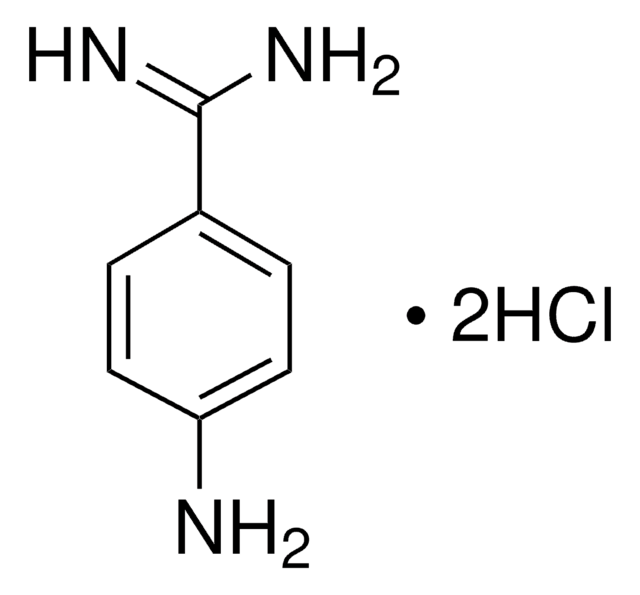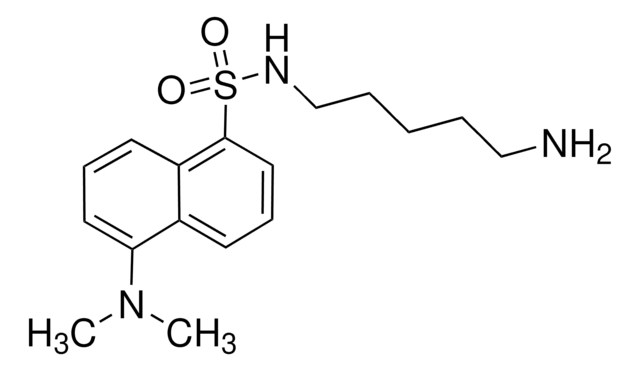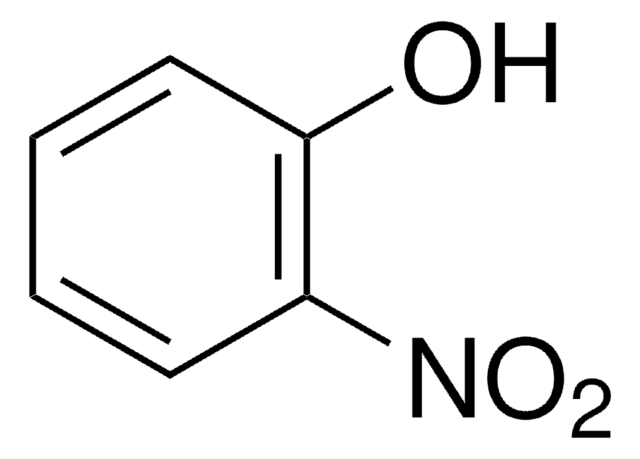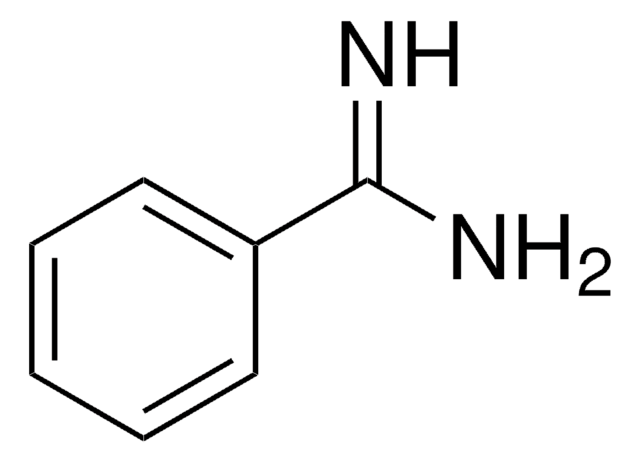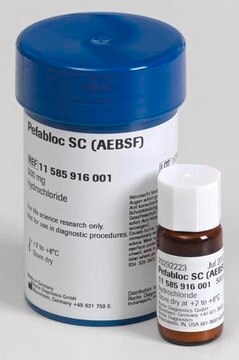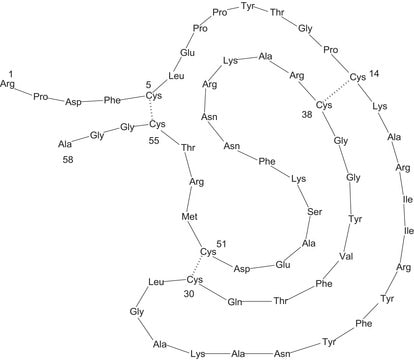06880
4-Aminobenzamidine dihydrochloride
BioReagent, suitable for fluorescence, ≥99.0% (TLC)
Sign Into View Organizational & Contract Pricing
All Photos(1)
About This Item
Linear Formula:
H2NC6H4C(=NH)NH2·2HCl
CAS Number:
Molecular Weight:
208.09
Beilstein:
3692927
EC Number:
MDL number:
UNSPSC Code:
12352100
PubChem Substance ID:
NACRES:
NA.32
Recommended Products
product line
BioReagent
Assay
≥99.0% (TLC)
form
powder or crystals
mp
>300 °C (lit.)
fluorescence
λex >300 nm in H2O
suitability
suitable for fluorescence
storage temp.
2-8°C
SMILES string
Cl[H].Cl[H].NC(=N)c1ccc(N)cc1
InChI
1S/C7H9N3.2ClH/c8-6-3-1-5(2-4-6)7(9)10;;/h1-4H,8H2,(H3,9,10);2*1H
InChI key
GHEHNICLPWTXJC-UHFFFAOYSA-N
Looking for similar products? Visit Product Comparison Guide
Analysis Note
Emmax: none
Other Notes
Competitive inhibitor of serine proteases; As a fluorescent probe for the active site of serine proteases
replaced by
Product No.
Description
Pricing
Storage Class Code
11 - Combustible Solids
WGK
WGK 3
Flash Point(F)
Not applicable
Flash Point(C)
Not applicable
Personal Protective Equipment
dust mask type N95 (US), Eyeshields, Gloves
Choose from one of the most recent versions:
Already Own This Product?
Find documentation for the products that you have recently purchased in the Document Library.
Customers Also Viewed
S A Evans et al.
The Journal of biological chemistry, 257(6), 3014-3017 (1982-03-25)
p-Aminobenzamidine is weakly fluorescent in neutral aqueous buffer, with excitation and emission maxima at 293 and 376 nm, respectively. Binding to trypsin results in a blue shift of the emission peak to 362 nm, and 50-fold fluorescence enhancement, while binding
Comparative studies on the inhibition of trypsin, plasmin, and thrombin by derivatives of benzylamine and benzamidine.
F Markwardt et al.
European journal of biochemistry, 6(4), 502-506 (1968-12-05)
STUDIES ON THE ACTIVE CENTER OF TRYPSIN. THE BINDING OF AMIDINES AND GUANIDINES AS MODELS OF THE SUBSTRATE SIDE CHAIN.
M MARES-GUIA et al.
The Journal of biological chemistry, 240, 1579-1585 (1965-04-01)
Nathan J Alves et al.
Biochemical and biophysical research communications, 457(3), 358-362 (2015-01-13)
The potent fibrinolytic enzyme, plasmin has numerous clinical applications for recannulizing vessels obstructed by thrombus. Despite its diminutive size, 91 kDa, success in the recombinant expression of this serine protease has been limited. For this reason, a truncated non-glycosylated plasmin
Our team of scientists has experience in all areas of research including Life Science, Material Science, Chemical Synthesis, Chromatography, Analytical and many others.
Contact Technical Service